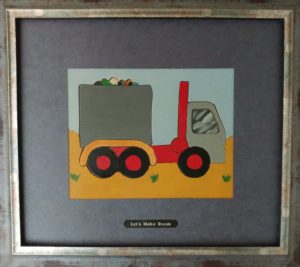Are you moving, getting ready for a remodel or simply want more room in your home with less clutter? Here are three common space hogs and what you can do about them.
-
Other people’s stuff. Did you agree to store things for your kids, relatives or friends for a few months but now those months have become years? Tell your kids or your Aunt Sadie you are moving or remodeling (even if you aren’t) and kindly ask them to arrange to get their items since you will need the space yourself. Set a firm deadline – a month is reasonable in most cases – and ask for their permission to sell or donate them — at your discretion — by a certain date if they don’t respond by that date. That way you’ve done your due-diligence.
-
Boxes from your last move (and likely the one before) that never got unpacked. Remember those boxes? I’m guessing you don’t but apparently they were so important that you bothered to move them at all. Chances are they contain one of the following: Old papers, memorabilia, holiday supplies, stuff belonging to your parents (or kids) that you just couldn’t face, or all those items that you don’t use but couldn’t throw away at the time.
If you are moving, are you really going to pay to have those boxes moved again?!
Here’s what to do about them starting with old papers: Unless you ran a small business, and they contain your tax records for the past seven years, get rid of them. Arrange to have a local shredding company pick them up or take them there yourself but don’t waste your time shredding them. Memorabilia: We keep memories for just this moment. No one else cares about these memories except you. If you want to leave a legacy for your children, don’t make it those boxes that have gathered dust in your garage or attic. Holiday supplies: Unless you used them last year, donate them to a charity that accepts art supplies. Stuff that belonged to your parents (or kids) that you coudn’t face: Refer to #1 above.
-
Magazines and old mail. There are certain magazines I love to read but once I’ve read them, they get recycled. Except in rare cases such as vintage out-of-print magazines, most collectors and charities don’t take old magazines. If you want to get rid of them, gather them up in small book boxes (so you can lift them) and carry them to your home’s recycling area. Most municipal recyclers won’t charge for paper recycling. As for old mail, you have three options: 1) pay to have it all shred. Depending upon how much you have, this could be costly but it will be the most timesaving approach and insure your identity will be safe. 2) Have a sorting party. Invite two or more people to help you sort your piles into keep, shred or toss. Keep includes “vital records” such as original birth and death certificates or personal memories that can’t easily be replaced. Shred includes any document, opened or not, from a banking or financial institution if it’s not obvious junk mail. Don’t waste time opening them if you’re not sure. Toss is everything else. 3) Hire a professional organizer or productivity specialist that specializes in residential or home office organizing. They can advise you about what to keep and help you sort and dispose of your unwanted paper safely.






